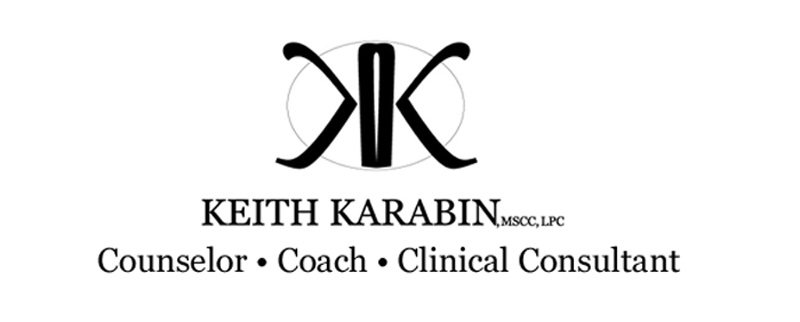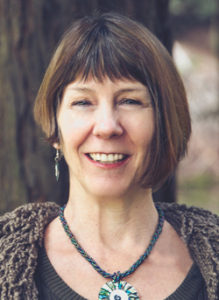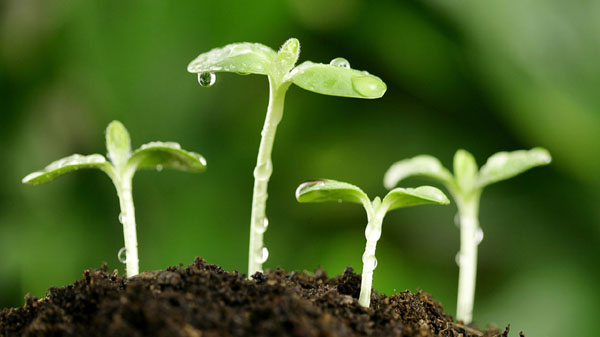Ecotherapy: A View of the Field from a Natural Expert
“The best remedy for those who are afraid, lonely or unhappy is to go outside, somewhere where they can be quite alone with the heavens, nature and God. Because only then does one feel that all is as it should be and that God wishes to see people happy, amidst the simple beauty of nature. And I firmly believe that nature brings solace in all troubles.”
-Anne Frank, Diarist
Our last article on Ecotherapy has garnered much interest—planted many seeds of curiosity—and today we water them in conversation with one of the leaders in the field of Ecotherapy, Ariana Candell, LMFT, R-DMT.
Ariana Candell is a Licensed Marriage and Family Therapist, Registered Dance and Movement Therapist, and professor at John F. Kennedy University. She “has over 20 years of experience as a licensed psychotherapist, and has been pioneering ‘Somatic Ecotherapy’ for the last decade. She is passionate about dance, movement, and sacred time in nature. These elements are woven throughout her therapy offerings. She loves to support her clients to discover their natural, unique aliveness” (Earthbody Institute, 2017).
She is also rich resource in the field of Ecotherapy, acting as both Ecotherapist and teacher of Ecotherapy and brings a deep knowledge of the current data and research which is grounded in the true power of Ecotherapy—a personal connection with nature that she lives out every day and shares with the world.
We are honored to have her share it with us, today.
What drew you to Ecotherapy?
“I was doing Ecotherapy before I knew I was doing it- exploring how dance and movement therapy could work with small groups outside. My inspiration to offer these workshops came during my morning walk through the redwoods—I was intrigued to see if I could bring therapy outdoors in all the beauty. It was 2009. I was teaching a Body Consciousness/Body Wisdom course at John F. Kennedy University and Craig Chalquist was a colleague who let me know his book Ecotherapy had just been published. I immediately began to read about the field, train and try it out.”
What keeps you invested in the therapy and the field?
At this point Candell shares the two moments highlighted below within a spark of back-and-forth dialogue energized by her humble and joyful devotion to Ecotherapy as much more than a field, but as a sacred and transformative practice for the individual and for our cultural relationship with the earth itself. Part of her continued inspiration comes from seeing the awakening and healing she has seen brought to countless clients and groups over time.
Part of that is “the excitement of the therapists as I teach and hear their passion. Or their ‘Aha’ moment when they learn that this connection with nature that they feel so strongly about is actually a field and ‘I can do it!’”
And part of that investment is personal. “I walk almost every day and it gives me so much. It’s a rich and restorative connection and an earth-centered way of relating to the land with gratitude.”
Why do you believe Ecotherapy is so effective?
“The therapist and the client are getting away from the fast pace of the modern world and the “ugliness” that can be there, to a place that thrives organically and enlivens their senses in a positive way. Being in a natural setting can help clients be able to hear their authentic self more. Being outdoors helps them develop self-care resources, both inside themselves and from the environment. There’s also more opportunities for synchronistic ‘magic’ from the land, plants and creatures.”
Why do you think that more people are seeking out Ecotherapy and the media is beginning to report on the different forms?
“Because in our current administration, people have more fears around what’s happening to their communities and to the entire United States, and are more aware of the disastrous impacts of climate change. People are concerned and mobilized to do something about all this, to include positive actions in their work. I think people are also following more of their passions, particularly with the younger generations entering the field.”
“I think the media is reporting on it more because of the greater awareness and confirmation of climate change and the vast world-wide evidence-based research in the field of Ecotherapy. There are also doctors giving nature prescriptions to children, teens and adults all over the country. The United Kingdom has concluded that it’s cheaper to prescribe time in nature than prescribing antidepressants and just as good for mild and moderate cases (Smith, 2014). It’s finally catching hold.”
Looking over the clients you’ve had over time, what would you say they have in common?
“They have an affinity or love of nature and want to do their healing work in nature. They feel more settled or relaxed in nature or they’ve had a negative experience in nature and want to heal that.”
The setting is a key component of Ecotherapy. How do you describe the interplay between nature, client and counselor?
“As someone goes into the natural area with me or anybody one of the things we usually do is make the transition from normal street life to nature. So there is an attention called to, or silence or slowing, a lot of different invitations offered to help the client be more aware of nature. So they are going to see differently, smell different things, hear more–it’s just going to be a different experience right from the beginning.”
“There’s an internal shift and as the therapy continues the interplay occurs at many different times, even just choosing where to sit and what kind of atmosphere; open, secluded, sunny, near water…we sit for a good amount of the session. They are directed to open to the resource that the natural world is; looking, seeing. Whether it’s the quiet or the strength of a tree, the sounds or smells. I will weave that into what we’re talking about. Sometimes that’s direct and sometimes it’s very indirect and sometimes there will be something very particular that is synchronistic to what the client’s issue is. If not, I will ask ‘what reminds you of this’ or what might tell you about this question here.”
“I believe in the synchronicity and sacredness of going to nature is helping to support the client and the session. I like to open up the client’s attention in different ways to invite that awareness.”
What are some moments that stick with you from groups or sessions?
“One client struggled with self-constriction and perfectionism.” Using movement therapy concepts in the natural world, Candell asked her to model the constricted posture, then the posture of how she wanted to feel which was more broad and open. The client said “I feel like a bird, I want to fly.” “Though we had been to the same spot for sessions many times,” Candell said, “it was then that [the client] noticed a baby bird coming out of the nest.” That moment shaped the rest of the session and is a fine example of the synchronistic aspect of Ecotherapy.
In another session, Candell had been working with a client for nearly two years who struggled with trauma of which some had to do with being outside. “It was a cold day and the client was cold as she hadn’t brought enough warm clothes,” In that discomfort “she found a trauma memory that centered around an aversion to cold” that she had carried with her all her life. After working through the memory in the environment, the client said “I’ve never felt as comfortable outside before.”
What are some benefits that you’ve seen people come away with? 
“Most come away with a validation of self, saying ‘This is who I am.’ People are deeply grateful to have the opportunity to experience a therapy session outside, and are surprised that Ecotherapy is so helpful.”
For therapists, the therapy itself has benefits because it’s so versatile that principles “can be integrated into offices” or taken out into the natural world for “people who prefer different formats” than offices, like veterans since “some veterans feel more secure in open spaces.”
In terms of professional fulfillment, “It is an incredibly satisfying field to incorporate into what you have already learned if you work in the therapeutic professions—like Marriage and Family Therapy, Social Work or as a Licensed Professional Counselor. It’s not that hard to translate into what you are already doing— indoors and outdoors.”
Is there anyone you wouldn’t advise trying Ecotherapy?
“Someone in a severe crisis or disassociating a lot. A child or teen who is super-impulsive and may not be able to be safe or listen outside. Someone who has a hard time connecting with the therapist—disorganized attachment—though some can get attached to nature first.”
How would you suggest people find a qualified Ecotherapist or for therapists to begin their training?
Interested clients “can google Ecotherapy or Nature Therapy in their area. There is a Facebook Ecopsychology forum of over seven thousand people around the world that they could post to and ask for recommendations. Or they could reach out to me or one of the other leaders in the field.”
Interested therapists can use the same resources. “There are online programs for therapists who love nature and have always had a hunch that bringing nature into their work or people into nature would be a good idea but have no idea how to do it,” Candell said. A great program is the one that she teaches at the Earthbody Institute, which is also listed in the bibliography below. “I am happy to have a conversation on the phone, or offer a free webinar to talk about it,” she encouraged.
What are some simple ways people can incorporate Ecotherapy principles into their daily lives?
Candell noted that much of what people can do involves a blend of awareness and gratitude. “People can remember when they’re drinking water, showering or taking a bath that the water actually comes from a place in nature that is wild and beautiful. Go outside and breathe the air, feel it on your face and be grateful that it’s giving you life. When you’re eating, remember that it comes from the land, sun, and rains. When doing what you love: gardening, enjoying your pet, or hiking, notice and take in the experience a little more than usual. When you’re outside slow down a little bit and notice what you’re enjoying.”
Much of our modern society rushes past and through nature on the way to our next important thing, missing the healing beauty that is all around us, waiting to settle our bodies, soothe hearts and clear minds. But we’re reaching a place of transformation with doctors prescribing nature. Ecotherapists like Ariana Candell, LMFT, R-DMT are healing hearts and empowering new Ecotherapists every day and with that one person who read this interview and are even now feeling a new seed planted or an idea bloom.
Ecotherapy is growing.
____________________________________________________
I am overwhelmed with gratitude to Ariana Candell for being a sage and eloquent source on such a profoundly exciting topic! I do encourage readers to please seek out the Earthbody Institute to further your interest, be it professional or personal—or both, as is the case with many Ecotherapists.
Earthbody Institute (2017) Photographs of Ariana Candell and references. Retrieved from: https://theearthbodyinstitute.com/
Smith, L. (2014) Rx: 50 mg Nature, Ad Lib. Medical Examiner-Slate.com. Retrieved from: http://www.slate.com/articles/health_and_science/medical_examiner/2014/07/doctors_prescribing_outdoors_time_nature_is_good_for_you.html




